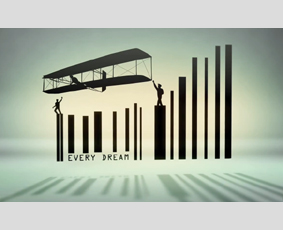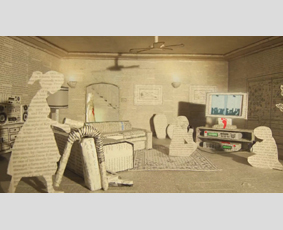Tag Archive for ‘form & technique’

The Price of Everything: Book Trailer Storytelling Evolved
One of the best book trailers I’ve ever seen.

Skiffy
“The gleaming synthetic permapolish leather holster held a proton blaster. Bat Durston pulled out the deadly weapon and thumbed the power pack release.”

Antagonist and Impact Character in Inception
There seems to be some confusion about who the Antagonist might be in Inception but frankly, I can’t see any problems here. Everything has its place, and cleverly so.

Book-Cut Storytelling: Three Stills and a Lemon
Three well executed book-cuts from the Czech Republic plus a German letter-cut with a pedestrian copy like you wouldn’t believe.

Narrativity and Diachronic vs. Episodic Self-Experience: Observing the Self
Is that a Cartesian Theater which I see before me? What Strawson’s self-observation lacks in methodology, it makes up for with psychological entitlement.

Inception Dream Architecture: Infographic Contest Winner
I started to try and sketch Inception’s dramatic structure (in words, not in pictures), and this greatly helps: Co.Design’s Inception Infographic Contest!

Narrativity and Diachronic vs. Episodic Self-Experience: Reading Literature
If that’s all the witnesses and the testimony you can muster in your favor, you might as well try and get to Mexico while you still have time.

New Particle Physics Framework Teaser That’ll Make Your Jaw Drop (And Haz Bunnies)
It’s called “Lagoa Multiphysics,” developed by Thiago Costa. But will it blend, in terms of storytelling, if games become ever more realistic?

Narrativity and Diachronic vs. Episodic Self-Experience: Checking the Evidence
You’d think when Strawson takes on the psychological Narrativity thesis and lets loose with both barrels, he’d load his gun with something substantial.

Narrativity and Diachronic vs. Episodic Self-Experience: Setting the Scene
According to Strawson, life is experienced in a “diachronic” or “episodic” kind of way: the former is compatible with psychological narrativity, the latter not.

Dramatic Conflict and the Future of Science Fiction
Dramatic conflict in science fiction connects to advanced aspects of a future society. With our accelerating technological progress, this is becoming difficult.

Travesty, Parody, and Advertising with a Purpose: #Prop8
Travesty is a powerful form of storytelling not despite, but because we know what’s going to happen. We’re already on the lookout for what’s different.

Turns and Flashbacks, Junctions as Junctures
Flashbacks are a powerful storytelling device, especially when used for missed turns and missed junctions-as-junctures.

Book-Cut Storytelling: Environment
This EWS/WWF commercial for the UAE is nicely done, but it lacks storytelling. Usually, it’s not the advice that sticks, it’s the story that goes with it.

Textual Landscapes: Book-Cut Storytelling Evolved
Mashing-up paper, text, moving images, and the voice of the narrator, a commercial featuring Maurice Gee takes book-cut storytelling to a whole different level.

Diegesis (“Excuse me sir, a what?”)
Diegesis is a technical term literature can do without. Mimesis too, but we should keep that one simmering on the back of the stove for historical reasons.

Good Grief
We’ve become so used to Kübler-Ross’s “Five Psychological States of Grief” that we never stop and ask if it might be more complex, in reality and writing.

Storytelling in Videogames: The Unfinished Swan
Sometimes storylines can be evoked by form rather than developed by content, and the results can be quite astonishing.

What’s in a Tale
While there certainly are differences between a tale and a story, they’re not necessarily what James Hull makes them out to be.

Overquirked!
If characters are overstuffed with mannerisms, they’re gaining in quirks while losing in depth. Quirks and idiosyncrasies, moreover, should have a function.





